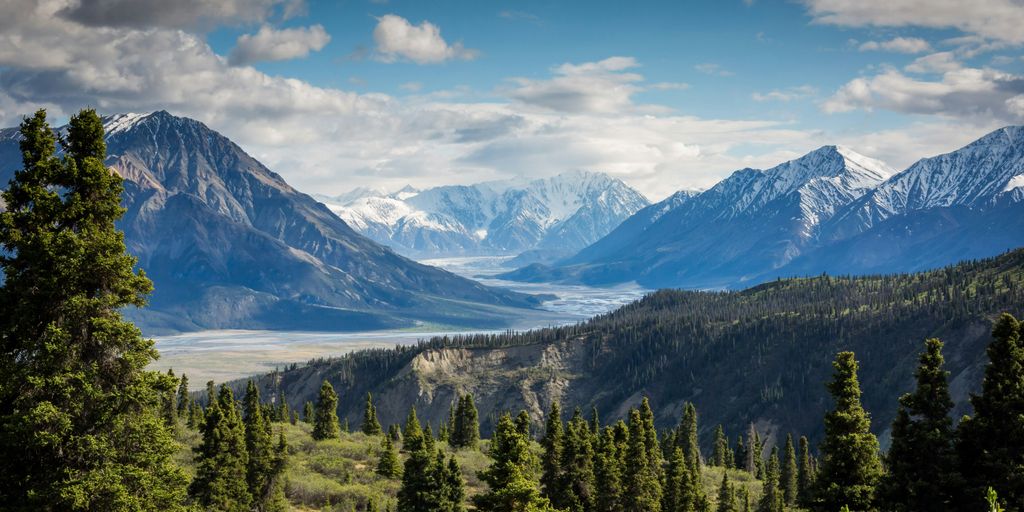Destinations
Argentina Travel Guide: Tango, Wine, and Natural Wonders

Argentina is a captivating country that offers a blend of vibrant cities, delicious food, and stunning natural landscapes. From the bustling streets of Buenos Aires to the breathtaking beauty of Patagonia, there’s something for everyone to enjoy. This travel guide will help you explore the best of Argentina, including its rich culture, famous wine regions, and remarkable natural wonders.
Key Takeaways
- Buenos Aires is the cultural heart of Argentina, known for its tango, historic sites, and lively neighbourhoods.
- Mendoza is famous for its wine, especially Malbec, making it a top destination for wine lovers.
- Patagonia boasts stunning glaciers and mountains, perfect for outdoor adventures.
- Iguazu Falls is a must-see, with its breathtaking views and diverse wildlife.
- Argentina’s cuisine is diverse, featuring not just steaks but also unique local dishes and street food.
Exploring Buenos Aires: The Heart of Argentina
Buenos Aires is a vibrant city that captures the essence of Argentina. Known for its rich culture and lively atmosphere, it offers a mix of history, art, and culinary delights. Here are some key areas to explore:
Historic Plaza de Mayo
The Plaza de Mayo is the city’s main square and a significant historical site. Here, you can find important landmarks such as:
- Casa Rosada: The presidential palace, famous for its pink facade.
- Metropolitan Cathedral: A stunning example of neoclassical architecture.
- Cabildo: The old town hall, which now serves as a museum.
Vibrant La Boca Neighbourhood
La Boca is known for its colourful buildings and lively street art. This area is a must-visit for anyone wanting to experience the local culture. Highlights include:
- Caminito Street: A famous street filled with vibrant murals and tango dancers.
- Local Artisans: Shops selling handmade crafts and souvenirs.
- Tango Performances: Experience the passion of tango in its birthplace.
Recoleta Cemetery
This cemetery is not just a burial ground; it’s a beautiful park filled with elaborate tombs and mausoleums. Notable features include:
- Eva Perón’s Tomb: The final resting place of the beloved First Lady.
- Architectural Styles: A mix of neoclassical, Gothic, and Art Deco designs.
- Peaceful Atmosphere: A serene place to reflect and appreciate the artistry of the graves.
Buenos Aires is a city that never sleeps, offering endless opportunities for exploration and enjoyment. Whether you’re sipping coffee in a café or dancing the tango, the spirit of Argentina is alive here.
In summary, Buenos Aires is a city that blends history, culture, and modernity, making it a perfect starting point for your Argentine adventure. Don’t miss the chance to experience its unique charm!
Mendoza: Argentina’s Premier Wine Region

Mendoza is a beautiful region nestled in the foothills of the Andes, known for its exceptional wines. This area is responsible for about 80% of Argentina’s wine production, making it a must-visit for wine lovers. Here, you can enjoy stunning landscapes and taste some of the best wines in the world.
Wine Tasting in Mendoza
When visiting Mendoza, wine tasting is a top activity. Here are some popular wineries to consider:
- Bodega Catena Zapata: Famous for its Malbec.
- Bodega Norton: Offers a variety of wines and beautiful views.
- Bodega Salentein: Known for its art and architecture.
Exploring the Vineyards
The vineyards in Mendoza are not just about wine; they also offer breathtaking scenery. You can:
- Take a guided tour of the vineyards.
- Enjoy a picnic among the vines.
- Participate in grape harvesting during the season.
The Famed Malbec Wine
Malbec is the star of Mendoza’s wine scene. This grape thrives in the region’s high altitude and sunny climate, resulting in rich, full-bodied wines. Malbec is celebrated worldwide for its deep colour and fruity flavours, making it a favourite among wine enthusiasts.
Mendoza is not just about wine; it’s a place where you can relax and enjoy the beauty of nature.
Whether you are a wine expert or just starting your journey, Mendoza offers a unique experience that combines tasting with stunning views and rich culture. Don’t forget to explore the local cuisine, which pairs perfectly with the wines!
Patagonia: A Land of Glaciers and Mountains
Patagonia is a stunning region in Argentina, known for its breathtaking landscapes filled with glaciers and towering mountains. This area is perfect for adventurers and nature lovers alike.
Perito Moreno Glacier
The Perito Moreno Glacier is one of the most famous glaciers in the world. Visitors can:
- Take a boat tour to see the glacier up close.
- Walk on the viewing platforms for a panoramic view.
- Listen to the sounds of ice cracking and falling into the water.
Mount Fitz Roy
Mount Fitz Roy is a must-see for hikers. The trek to the summit is challenging but offers:
- Stunning views of the surrounding landscape.
- Opportunities to spot local wildlife.
- A sense of accomplishment upon reaching the top.
Tierra del Fuego National Park
This national park is located at the southern tip of Argentina and is home to diverse wildlife. Here, you can:
- See penguins and sea lions in their natural habitat.
- Enjoy hiking trails that showcase the park’s beauty.
- Experience the unique flora and fauna of the region.
Patagonia is a place where nature reigns supreme, offering unforgettable experiences for all who visit.
In summary, Patagonia is a land of glaciers and mountains that captivates every traveller. Whether you’re hiking, exploring, or simply soaking in the views, this region is sure to leave a lasting impression.
The Mighty Iguazu Falls

Iguazu Falls is one of the most breathtaking natural wonders in the world, located on the border between Argentina and Brazil. This stunning site consists of 275 individual cascades, making it a must-see for any traveller.
Viewing Platforms and Boat Tours
- Garganta del Diablo: This is the most famous viewpoint, offering spectacular views of the largest waterfall.
- Upper Trail: A scenic walk that provides a different perspective of the falls.
- Lower Trail: This path takes you closer to the water, where you can feel the mist on your face.
The Devil’s Throat
The Devil’s Throat is the most impressive section of the falls. Here, the water plunges into a deep gorge, creating a thunderous roar that can be heard from miles away. Visitors can take a catwalk to get a closer look at this magnificent sight.
Flora and Fauna of Iguazu
Iguazu National Park is not just about the falls; it is also home to a rich variety of wildlife. Here are some highlights:
- Toucans: Brightly coloured birds that are a delight to spot.
- Coatis: These playful animals are often seen roaming around the park.
- Butterflies: The park is filled with vibrant butterflies, adding to the beauty of the landscape.
The experience of standing before the mighty Iguazu Falls is unforgettable, as the sheer power of nature leaves a lasting impression on all who visit.
The Cultural Tapestry of Argentina
Argentina is a vibrant country with a rich mix of cultures. Its culture is a blend of European, Indigenous, and African influences that create a unique identity. Here are some key aspects of Argentine culture:
European Influences
- Many Argentines have European ancestry, particularly from Italy and Spain.
- This influence is evident in the architecture, food, and traditions.
- Cities like Buenos Aires are often compared to European capitals for their style and charm.
Indigenous Heritage
- Indigenous communities have a deep-rooted history in Argentina.
- Their traditions, languages, and art forms are celebrated and preserved.
- Festivals often showcase Indigenous music and dance, highlighting their contributions to the culture.
African Contributions
- African culture has also played a significant role in shaping Argentine identity.
- The rhythms of African music can be heard in tango and candombe, a traditional dance.
- Many Argentine foods, like certain stews, have African origins, adding to the culinary diversity.
Argentina’s culture is a beautiful tapestry woven from various threads, each adding its own colour and texture.
In summary, Argentina’s cultural landscape is diverse and dynamic, making it a fascinating destination for travellers. Whether you’re enjoying a tango show or tasting local dishes, you’ll find that the country’s rich heritage is always present.
Argentine Cuisine: Beyond Steaks and Malbec

Argentina is famous for its delicious food, which goes far beyond just steaks and Malbec. Here’s a closer look at what you can enjoy:
Traditional Dishes to Try
- Empanadas: These are pastry pockets filled with meat, cheese, or vegetables.
- Asado: A traditional barbecue featuring various cuts of meat, often cooked over an open flame.
- Milanesa: A breaded meat cutlet, similar to a schnitzel, usually served with mashed potatoes.
Michelin-Starred Restaurants
Argentina boasts several Michelin-starred restaurants that showcase the country’s culinary talent. Some notable mentions include:
- D.O.M.: Known for its innovative dishes using local ingredients.
- Oro: Offers a unique dining experience with a focus on Argentine flavours.
- El preferido de Palermo: A trendy spot that combines traditional and modern cuisine.
Street Food Delights
Don’t miss out on the vibrant street food scene! Here are some must-try items:
- Choripán: A sausage sandwich often served with chimichurri sauce.
- Provoleta: Grilled provolone cheese, usually topped with oregano.
- Dulce de Leche: A sweet caramel-like spread, perfect for desserts.
Argentina’s cuisine is a blend of cultures, reflecting its rich history and diverse influences.
In summary, while Argentina is renowned for its steaks and Malbec, the culinary landscape is rich and varied, offering something for every palate. From traditional dishes to gourmet experiences, there’s a feast waiting for you!
Adventure Activities in Argentina

Argentina is a paradise for adventure lovers, offering a wide range of activities that cater to all types of thrill-seekers. From hiking in the Andes to skiing on the slopes, there’s something for everyone.
Hiking and Trekking
- Trekking in Patagonia: Explore the stunning landscapes of Patagonia, where you can hike through breathtaking national parks.
- Mount Fitz Roy: This iconic peak offers challenging trails with spectacular views.
- Tierra del Fuego National Park: Discover diverse wildlife and beautiful scenery on various hiking trails.
Skiing in the Andes
- Cerro Catedral: One of the largest ski resorts in South America, perfect for skiing and snowboarding.
- La Hoya: Known for its excellent snow conditions, ideal for winter sports enthusiasts.
- Chapelco: Offers a mix of slopes for all skill levels, along with stunning views of the Lanín Volcano.
Wildlife Watching
- Iguazu National Park: Home to the magnificent Iguazu Falls, where you can spot various wildlife.
- Iberá Wetlands: A haven for birdwatchers and wildlife enthusiasts, featuring capybaras and caimans.
- Valdés Peninsula: Famous for whale watching, especially during the migration season.
Argentina is not just about the sights; it’s about the experiences that will stay with you forever. Whether you’re hiking, skiing, or watching wildlife, every moment is an adventure waiting to happen.
For those seeking adrenaline & extreme tours in Argentina, consider discovering Tierra del Fuego National Park on an outdoor adventure that includes a 3-hour hike, picnic lunch, and a 1.5-hour canoe paddle. This is just one of the many ways to immerse yourself in the natural beauty of this incredible country!
The Charm of Bariloche
Bariloche, often called "Little Switzerland," is a stunning destination in Argentina. Nestled by the glacial Nahuel Huapi Lake and surrounded by majestic mountains, it offers breathtaking views and a unique blend of cultures.
Lakes and Mountains
- Nahuel Huapi Lake: A glacial lake perfect for swimming and boating.
- Cerro Catedral: A popular mountain for skiing and hiking.
- Cerro Campanario: Offers panoramic views of the region.
Swiss-Style Architecture
- Chocolate Shops: Bariloche is famous for its delicious chocolates.
- Alpine-style Buildings: The town features charming buildings reminiscent of Swiss architecture.
- Local Breweries: Enjoy craft beers in a picturesque setting.
Local Chocolates and Breweries
Bariloche is renowned for its chocolate shops. Visitors can indulge in a variety of sweet treats, from rich dark chocolate to creamy truffles. Additionally, the local breweries offer a taste of Argentina’s craft beer scene, making it a delightful stop for food lovers.
Bariloche is a place where nature meets culture, creating a unique experience for every visitor.
Whether you’re hiking in the mountains or enjoying a hot chocolate by the lake, Bariloche is sure to enchant you with its beauty and charm.
Salta and Jujuy: Historic Towns of the North
Colonial Architecture
The towns of Salta and Jujuy are known for their beautiful colonial architecture. Walking through the streets, you can see colourful buildings that tell stories of the past. Key highlights include:
- Salta’s Cathedral: A stunning example of colonial design.
- Cafayate’s Wine Houses: Where you can taste local wines.
- Jujuy’s Historic Centre: A UNESCO World Heritage site.
Local Markets
Visiting local markets is a must when in Salta and Jujuy. Here, you can find:
- Handmade crafts: Unique souvenirs to take home.
- Local foods: Try empanadas and other traditional dishes.
- Textiles: Beautifully woven fabrics that reflect the culture.
Cultural Festivals
These regions are rich in culture, and festivals are a big part of life. Some notable festivals include:
- Salta’s National Folklore Festival: Celebrating music and dance.
- Jujuy’s Carnival: A vibrant display of colour and tradition.
- Cultural events: Throughout the year, showcasing local talent.
The blend of European, Indigenous, and African influences makes Salta and Jujuy a fascinating place to explore.
Whether you’re wandering through the historic streets or enjoying the local cuisine, these towns offer a unique glimpse into Argentina’s rich history and culture. Don’t miss the chance to experience the captivating travel stories that these regions have to offer!
Navigating Argentina: Tips for Travellers
Getting around Argentina can be straightforward if you know what to expect. Here are some essential tips to help you navigate this beautiful country:
Domestic Flights
- Flying is often the quickest way to travel between major cities like Buenos Aires, Mendoza, and Salta.
- Airlines such as Aerolíneas Argentinas and LATAM offer frequent flights.
- Booking in advance can save you money.
Bus and Train Travel
- Buses are a budget-friendly option for long distances. They are comfortable and often include amenities like Wi-Fi.
- Companies like Plataforma 10 and Busbud allow for easy online bookings.
- Train travel is limited but consider scenic routes like the Tren a las Nubes in Salta.
Taxis and Ride-Sharing
- In cities, taxis and ride-sharing services like Uber are widely available.
- Always use licenced taxis to avoid scams.
- Be cautious and aware of your surroundings when using these services.
Remember, planning ahead can make your travel experience smoother and more enjoyable!
By keeping these tips in mind, you can explore Argentina with confidence and ease. Enjoy your adventure!
Experiencing Tango in Buenos Aires
Tango is more than just a dance; it’s a passion that flows through the streets of Buenos Aires. This vibrant city is the birthplace of tango, and experiencing it is a must for any visitor.
Tango Shows and Performances
- Where to see tango in Buenos Aires: There are numerous venues where you can enjoy live tango performances. Here are some popular options:
- El Querandí: A traditional venue with a rich history.
- Café Tortoni: The oldest café in Buenos Aires, offering tango shows.
- La Ventana: Known for its authentic atmosphere and talented dancers.
Taking a Tango Lesson
If you want to dive deeper into the tango culture, consider taking a lesson. Many studios offer classes for all skill levels. Here’s how to get started:
- Choose a studio: Look for one that fits your schedule and budget.
- Wear comfortable shoes: You’ll be dancing, so comfort is key.
- Enjoy the experience: Don’t worry about perfection; just have fun!
History of Tango
Tango originated in the late 19th century in the working-class neighbourhoods of Buenos Aires. It combines influences from various cultures, including European and African. Over the years, it has evolved into a global phenomenon, but its heart remains in Argentina.
Tango is a dance of love and longing, reflecting the emotions of its dancers.
Whether you’re watching a performance or dancing yourself, experiencing tango in Buenos Aires is an unforgettable part of your journey.
Final Thoughts on Your Argentine Adventure
In conclusion, Argentina is a country full of excitement and beauty. From the lively streets of Buenos Aires, where you can dance the tango, to the stunning landscapes of Patagonia, there is something for everyone. Don’t forget to indulge in the delicious food and world-class wines, especially in Mendoza. Whether you’re hiking near glaciers or enjoying a meal with locals, your trip will be unforgettable. So pack your bags and get ready for an adventure in Argentina, a place that truly has it all!
Frequently Asked Questions
What are the must-see places in Argentina?
Some top spots include Buenos Aires, Mendoza for wine, and the stunning Iguazu Falls.
Is it safe to travel in Argentina?
Yes, many tourists visit Argentina safely. Just be cautious in crowded areas and keep an eye on your belongings.
What is the best time to visit Argentina?
The best time to go is during spring (September to November) or autumn (March to May) for pleasant weather.
Do I need a visa to visit Argentina?
It depends on your nationality. Many countries can enter without a visa for short stays.
What is the local currency in Argentina?
The currency is the Argentine Peso. It’s good to have cash for small purchases.
What types of food should I try in Argentina?
Don’t miss out on asado (barbecue), empanadas, and the famous Malbec wine.
Can I use my credit card in Argentina?
Yes, credit cards are widely accepted, but it’s wise to have some cash for smaller shops.
How do I get around Argentina?
You can travel by domestic flights, buses, or trains. Taxis and ride-sharing apps are also available in cities.
-

 Home and Garden4 days ago
Home and Garden4 days agoTransform Your Space: A Guide to Minimalist House Interior Design in 2025
-

 Innovations7 days ago
Innovations7 days agoWill AI Take Your Job? The Truth About Automation and Employment
-

 Home & Family4 days ago
Home & Family4 days ago10 Essential Cleaning Hacks for Bathroom Surfaces You Need to Try
-

 Crime4 days ago
Crime4 days agoExploring the Most Anticipated New True Crime Documentaries of 2025
-

 Health & Fitness4 days ago
Health & Fitness4 days agoDiscovering the Best Multivitamin for Women Over 40: Essential Nutrients for Optimal Health
-

 Business4 days ago
Business4 days agoMaximize Your Earnings with American Express High Yield Savings Accounts in 2025
-

 Health & Fitness4 days ago
Health & Fitness4 days agoDiscover the Best Multivitamin for Women Over 40: A Comprehensive Guide to Optimal Health
-

 Artificial Intelligence4 days ago
Artificial Intelligence4 days agoBreaking Generative AI News: Innovations Shaping the Future of Technology






































